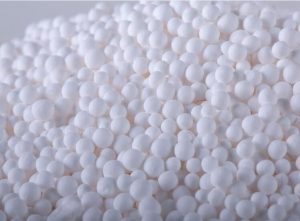Claus catalyst-Activated alumina catalysts
LS102 Claus catalyst-Activated alumina catalysts is a kind of activated alumina as catalyst in Claus sulfur recovery unit. It is suitable for oil refinery with H2S acid gas, natural gas purification desulfurization plants, city gas plant, petrochemical plants and the Claus sulfur recovery in chemical plants.

And, some applications may require promoted activated alumina, titania/alumina, or even titanium dioxide.
The Claus process is a catalytic-based chemical technology used in converting gaseous hydrogen sulfide (H2S) into elemental sulfur (S). Effective catalysts for the Claus reaction generally utilize LS102 Claus catalyst-Activated alumina catalysts. This activated alumina catalysts are an extremely porous aluminum oxide. LS102 clause sulfur recovery activated alumina for sulfur recovery are critical to optimum catalytic performance.
Claus catalyst-Activated alumina catalysts characteristics
- High surface area
- Large pore volume distribution
- Low dusting and high crush strength
- Uniform sphere size and shape
Claus catalyst activated alumina catalyst application
LS102 Claus catalyst-Activated alumina catalysts are catalyst in Claus sulfur recovery unit, which drive up conversion of H2S to elemental sulfur
Focus has the most extensive line of Claus Catalysts in the industry. In addition to non-promoted and promoted activated alumina, we offer two different titania catalysts along with a alumina/ titania composite catalyst. Two types of bed supports, both active and inert, are available with diameters ranging from 0.125″ to 2.0″.
Why chose our Claus Catalysts or activated alumina catalysts?
Our company offers a full range of claus catalysts with a large number of accessible surface active sites for H2S and S20 to react and form sulfur and water (high surface area), large pore volume distribution (high macroporosity), low bulk density which directly lowers catalyst expense, low abrasion and high strength which minimizes dust and fines and uniform size and shape for lower pressure drops.
| Item | Unit | Technical requirement | |
| Particle size | mm | 4~6 | 5~7 |
| AL2O3 | % | ≥92 | ≥92 |
| SiO2 | % | ≤0.10 | ≤0.10 |
| Fe2O3 | % | ≤0.03 | ≤0.03 |
| Na2O | % | ≤0.4 | ≤0.4 |
| Bulk density | g/ml | 0.7-0.8 | 0.7-0.8 |
| Surface area | ㎡/g | ≥320 | ≥320 |
| Pore Volume | ml/g | 0.40-0.45 | 0.40-0.45 |
| Crushing Strength (N/Particle) | N/particle | ≥160 | ≥200 |
carrier@catalystcarrier.net
more:
